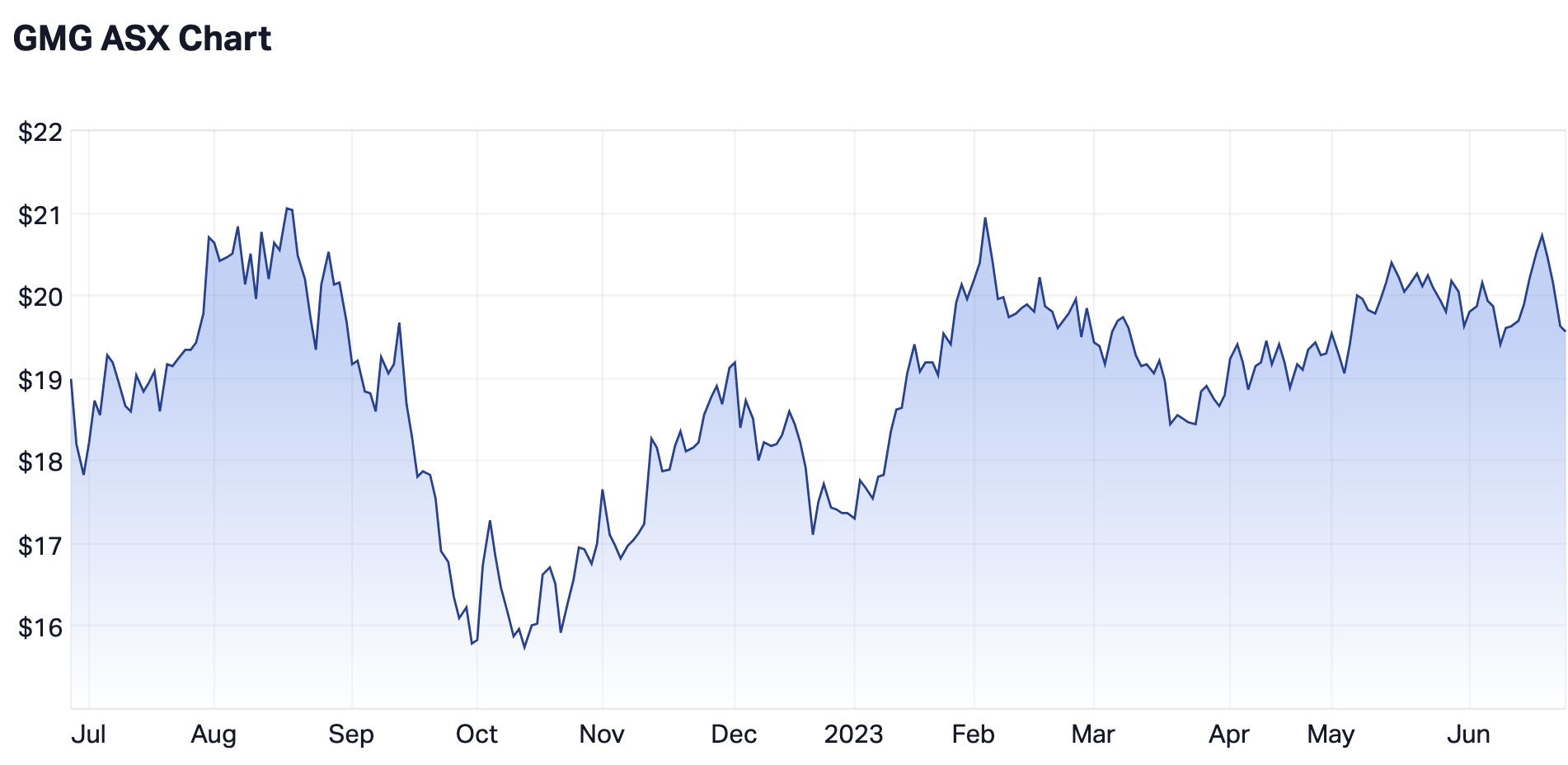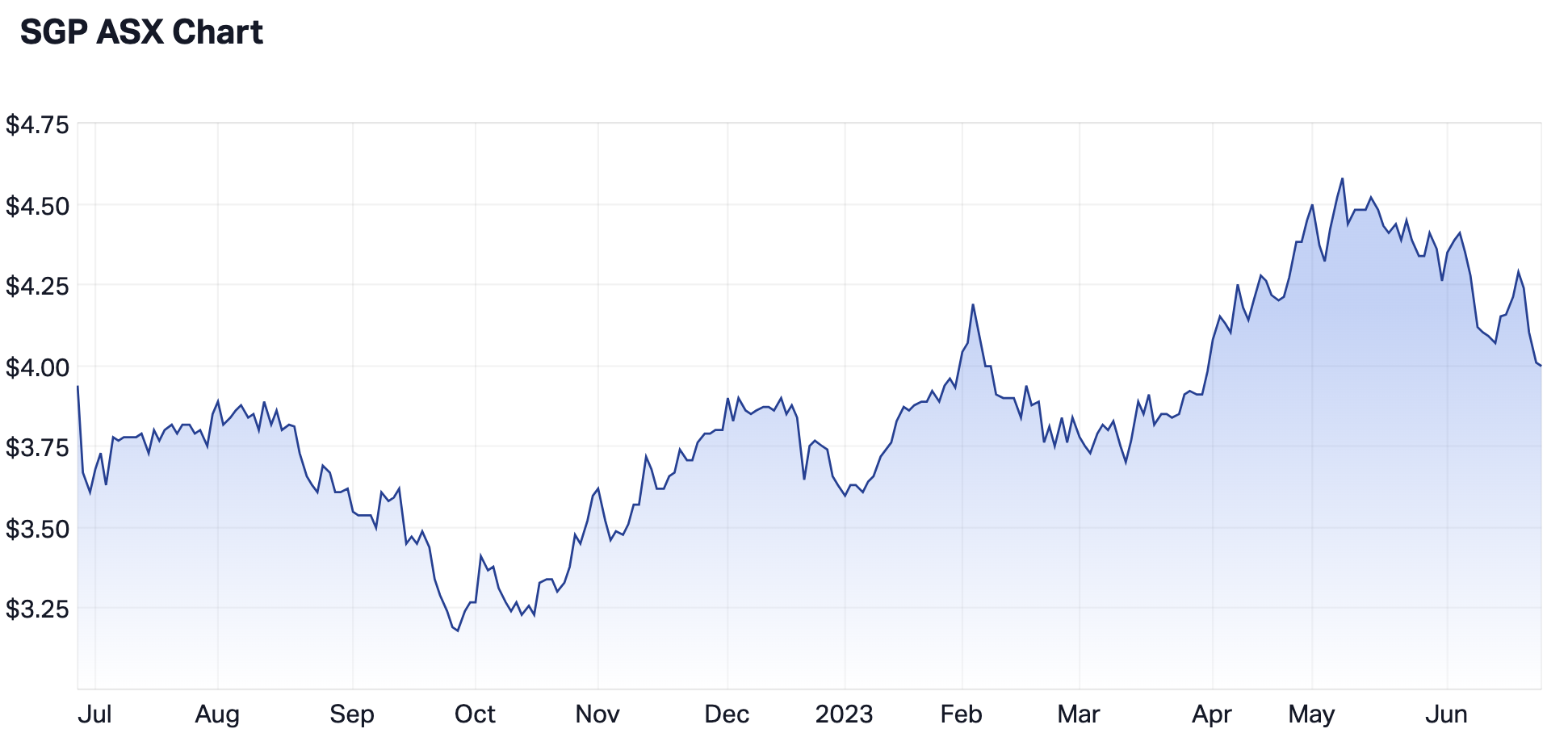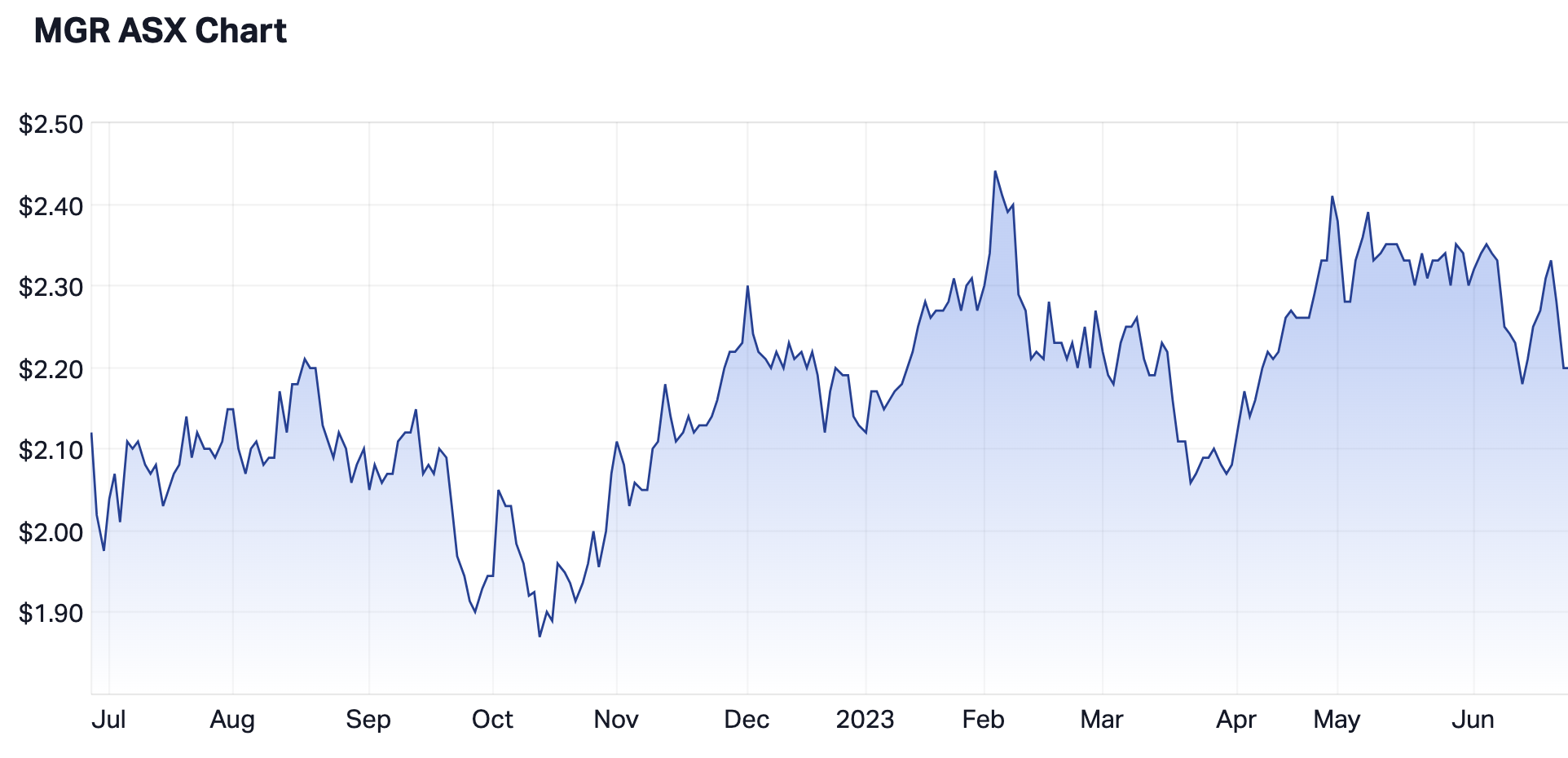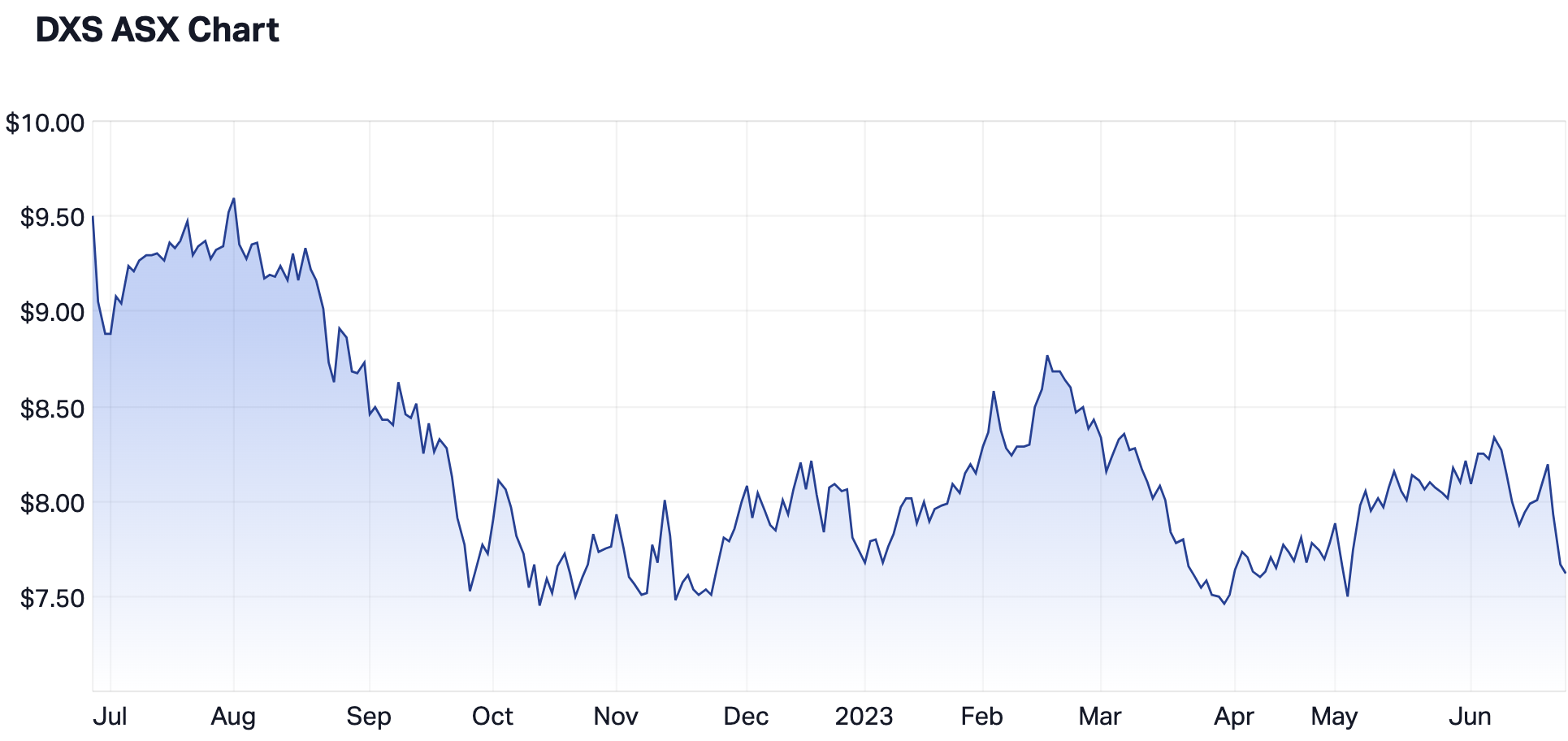ASX property stocks – Broker views and a fundie's perspective, six months on
The share price of one of Australia’s five largest property groups, Dexus (ASX: DXS), has taken a belting in the last 18 months as interest rates have risen. The company’s CEO, Darren Steinberg, laid most of the blame on its portfolio of 32 office properties, which saw a 7.7% decline in valuations in the six months to 30 June 2023.
He also revealed the industrial portfolio also fell by 0.2% during the period in the company’s latest market update.
What’s going on in Australian listed property?
Rising interest rates have hit the sector as a whole. Office properties are contending with the double-whammy of changing work patterns that accelerated during COVID, alongside the hiring freezes amid the economic downturn since last March. These points were emphasised by Dexus Real Estate Securities portfolio manager David Kruth in a recent chat with Livewire’s Hans Lee. But he also said things aren’t all bad for Australian listed property.
Indeed, four of the ASX’s five largest A-REIT companies are rated either BUY or STRONG BUY on Market Index’s Broker Consensus widget, as of 1 June 2023. Just one of them falls outside this bullish narrative, Mirvac (ASX: MGR) narrowly edging into HOLD territory.
In this feature, I canvas the views of several brokers on the five largest ASX-listed real estate firms. I also speak with Andrew Parsons, CIO of REIT-specialist asset manager Resolution Capital, for his current take on the sector and expectations for the next 18 months and beyond.
Goodman Group (ASX: GMG)
Led by founder Greg Goodman, the company is an integrated commercial and industrial property group that owns, develops and manages real estate. Its assets include warehouses, logistics facilities along with business and office parks around the world.
Broking firm Morgans on 5 June included Goodman on its coverage list with an ADD rating, with analyst Liam Schofield setting a price target of $24.
Jefferies upgraded the company to BUY from Hold on 27 March, with analyst Sholto Maconochie leaving his price target at $21.35.
At these levels, Goodman Group’s closing price of $19.63 on Monday 26 June represents a potential upside of between 7% and 20%.

Scentre Group (ASX: SCG)
A shopping centre company, Scentre owns, develops, designs and builds retail centres under the Westfield umbrella in Australia and New Zealand. It also runs funds and asset management, property management, leasing and marketing operations for Westfield.
On 20 June, Barrenjoey upgraded Scentre Group to OVERWEIGHT from Neutral, with analyst Ben Brayshaw leaving his price target at $3.05.
Jefferies upgraded SCG to BUY on 3 March, with analyst Sholto Maconochie’s price target remaining at $3.24.
With a Monday closing price of $2.51, SCG presents a potential upside of between 20% and 30%.

Stockland Group (ASX: SGP)
One of Australia’s largest residential developers, Stockland’s operations also span shopping centres and industrial housing – alongside housing estates and manufactured housing communities (pre-fabricated houses).
UBS downgraded Stockland on 21 June to NEUTRAL from Buy, with analyst Tim Bodor cutting his price target to $4.25 from $4.31.
CLSA also downgraded the company on 7 June, to UNDERPERFORM from Outperform, citing the weaker outlook for house prices. Analyst James Druce cut his price target to $4.17 from $4.58.
At SGP’s $4 closing price on Monday, this suggests the company present a potential upside of between 4% and 6%.

Mirvac Group (ASX: MGR)
Another of Australia’s largest residential developers, Mirvac’s operations span property investment, development and retail services across housing, retail, office, industrial and build-to-rent.
UBS upgraded Mirvac to BUY from Neutral on 21 June, with analyst Tim Bodor also lifting his price target to $2.55 from $2.37.
Citi downgraded the company to NEUTRAL from Buy on 1 May but analyst Suraj Nebhani increased his price target to $2.55 from $2.25.
Mirvac closed at $2.20 a share on Monday, presenting a potential investor upside of 15%, based on the above views.

Dexus (ASX: DXS)
Dexus is an Australian public trust that runs a portfolio of properties across the office, industrial, healthcare and retail sectors, in addition to a funds management business.
On 5 April, Citi re-added the firm to its coverage list with a NEUTRAL rating, with analyst Howard Penny setting a $8 price target.
Barrenjoey downgraded DXS to NEUTRAL from Overweight on 23 March, with analyst Ben Brayshaw cutting his price target to $8.50 from $9.
The property group’s closing share price of $7.62 on Monday sees the company presenting investor upside of between 5% and 11%.

View from the buy-side: Andrew Parsons, Resolution Capital
Asked whether his view on Australia’s listed property sector has shifted since we spoke back in January, Parsons describes a “perplexing dynamic” that’s occurring because of the various factors at play.
“And the market is definitely taking a glass-half-empty view on the sector,” he says.
“People have more choice now in terms of the re-pricing of some equities and bonds over the last 12 months, and with interest on deposit accounts having moved up significantly.”
Parsons also notes that the uncertain macro environment both abroad and at home, where the RBA is pointing to further interest rate rises, means many investors are focused on freeing up cash.
What effect is the housing affordability crisis having?
“On the glass half full side, there’s a shortage of residential property and that’s manifesting itself in low vacancy rates, increasing rents and house prices that are proving remarkably resilient,” Parsons says.
“There’s multiple ways you can look at this dynamic now, and the reality is that new construction starts are falling and rents are rising, which paints a positive picture.”
But he also emphasises that both Mirvac and Stockland are residential development traders, and as such, require the ongoing supply of land in order to constantly buy and sell.
“And for new home buying, that’s the part of the market that’s become most challenging in relation to affordability and disposable income, it’s suffering currently,” Parsons says.
“Governments will stimulate that part of the market at points in time, but given it’s facing an RBA that’s pretty determined to cool the market and tame inflation, I don’t think that’s a high priority for the Federal Government now.”
Which sector are you avoiding currently?
Parsons remains most cautious on the office sector – as he was back in January – describing the supply picture across Australian capital cities as “a little elevated.”
“There are a lot of cranes in the city skylines of Sydney, Melbourne and Brisbane,” he says.
“In mainland capital cities, we’re now facing an office vacancy rate over 10%, which suggests REITs are under pressure but there is a definite level of bifurcation…tenants are more focused on higher quality buildings.”
Property sector’s biggest causes for fear – and hope – ahead
Parsons' biggest concern is the potential of a deep economic recession, but he notes that’s a fear that extends well beyond the property sector.
“It’s that the ongoing policy error by the Reserve Bank, using the blunt instrument, is creating long-term issues for what many hope is transitory inflationary pressures, and that creates a deep-seated economic malaise,” he says.
“It’s a risk and we don’t want to downplay it, but nor should we be panicking just yet,” Parsons says.
On the upside, he notes that balance sheets are reasonably healthy across the listed real estate sector.
“And there hasn’t been an overallocation to commercial property development…it’s not like the late 1980s or early 90s when there was a massive amount of money in speculative development and oversupply,” Parsons says.
He regards the retail area of listed property as a bright spot – somewhat surprisingly – and for a couple of reasons. These include the slowdown of mall construction and development in recent years, which contrasts with the huge amount of retail construction that occurred during the depths of the recession in the early 1990s.
“Because people think e-commerce is killing demand for bricks-and-mortar, there’s not much construction taking place and yet retail sales and shopping centres are now up to 2019 levels and footfall is back within 5%,” Parsons says.
“And yet retailers are re-focusing on physical stores because they recognise that’s where their most profitable sales are. Surprise surprise – delivering to homes free of charge doesn’t make money!”
This shortage of new supply is boosting the demand for existing retail spaces, which is a positive for investors in the sector.
How is Resolution Capital positioned?
Though Parsons declines to name a favourite company, he infers several things. For example, two prominent Australian REITs make it into the portfolio of the asset manager’s global listed property strategy. They are:
- Vicinity Centres (ASX: VCX), and
- Scentre Group.
“This is a concentrated strategy that also includes a couple of Australian REITs, which probably tells you something about where we see long-term return prospects,” Parsons says.
Quizzed on the Australian strategy’s longest-held position, he names Stockland Group but he emphasises that’s largely because it’s one of the only REITs that hasn’t undergone a major restructure within the 28 years the fund has been running.
“Whereas Goodman effectively merged with a fund back in 2008-2009. And GPT has been a long-held position but it hasn’t been a big one, having blown up in 2009. And Mirvac really only started in 1999,” says Parsons.
3 topics
6 stocks mentioned
2 contributors mentioned

